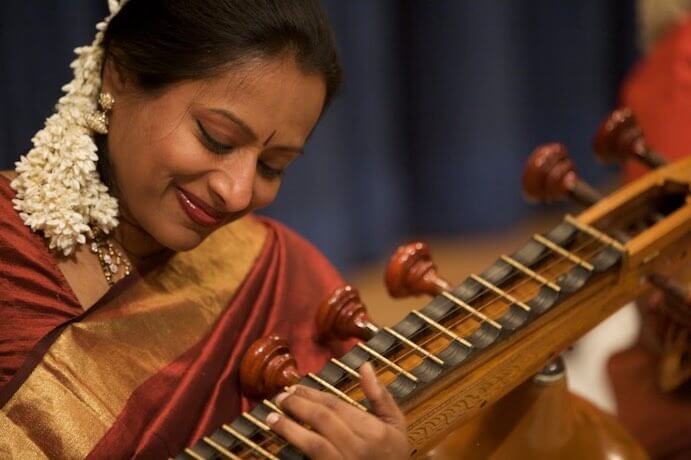“Out of Context” is a 10-part series that addresses the topic of cultural appropriation as it intersects with both Western European-based classical music and the broader social landscape. Commissioned by American Composers Forum and I CARE IF YOU LISTEN, the goal of the series is to offer information and diverse perspectives to those seeking to acknowledge historical context, honor cultural traditions that are not their own, and expand their sphere of knowledge with awareness and respect. A culminating collection of these articles and other resources will be shared for continued learning and dialogue.
A rousing arrangement of a Black-American spiritual at the end of a choral concert. A piece by a South American composer slotted in between European symphonies purported to have “Latin-flavored rhythms.” A work by a white composer framed as an ode to a supposedly overlooked mythic figure of non-Western origin… do the details matter? After all, these are just a few of the maneuvers we have developed in Western classical concert music to “diversify” our programs.
Let me begin by saying this: I understand. I understand that your organization might be facing pressure to change your traditional concert season. I understand that you might be becoming aware of how white or male or straight or ableist or otherwise-normative your program is. I understand that you might have looked around the room one rehearsal and noticed that your ensemble looks a little different than thirty years ago. I understand.
But do you understand me?
Last year, the new music scene exploded when brave voices pointed out how white composers had appropriated and thieved the music of historically marginalized composers of color. These were not examples from history, but contemporary and ongoing actions, which made these truths particularly bitter for some to swallow. In the online arguments, I observed tenuous comments from composers and performers, afraid that they would somehow misstep.
I have always firmly believed that more music leads to greater understanding. As a child, I went with my mother, Carnatic musician Nirmala Rajasekar, to hundreds of presentations at schools, community centers, and nursing homes across America. These were different from her prestigious concerts or whirlwind tours—in these more intimate performances, she had to lay out the historical, cultural, and social contexts of her work to audiences, who were often unfamiliar and sometimes reluctant, but their subsequent transformations were always remarkable. That’s maybe why I’ve dedicated my life to using music to build compassion. I compose a variety of works, several of which explore my Indian heritage and diasporic identity. I do this to not only understand myself better, but to also foster cultural dialogue with ensembles as we collaboratively assemble a piece.

Nirmala Rajasekar–Photo courtesy www.nirmalarajasekar.com
But I am realizing that music creation approached for the wrong reasons can cement ignorance. In Western concert music, there is a long history of composers using music to evoke the “exotic” unknown, dividing humans into the categories of primitive “them” and divinely-ordained “us.” Such rhetoric is not so distant from today—what is treating an entire culture’s music as something “light,” “fun,” “encore material,” or “a discovery” but a reduction of that culture into something lesser than yours? Not only is it racist, it is also uninformed.
It is vital that we change our programs, but we need the kind of understanding that my mother fosters—now, more than ever. It might seem daunting to build an informed program of integrity, so here are some starting steps:
1. When you decide to program a specific tradition’s repertoire, first ask yourself why.
Is it to engage your ensemble, the wider community, or new audiences? Talk to people. Ask them what they might want to see in your programs, and listen as much as possible. If talking to performers in another tradition or genre, ask whether you can attend one of their events.
Is it because you’ve noticed that your current repertoire upholds problematic conventions? This is good to change, but you’ll need to make sure that you’re not seeking tokenist solutions. It is important to make space for underrepresented composers in your program, but you have to follow through with institutional change. Can you also make larger changes in the makeup of your organization? Can you diversify leadership and bring in different voices? Have you reassessed your mission?
Is it because you need something “rhythmic,” “light,” “fun,” “popular,” or “obscure” for your preexisting program? This is a problem, and your vocabulary indicates that you need to dig deeper. Examine your biases and values (e.g. what constitutes “high” art for you?) and whether you can alter these entrenched views. Then, do your research. Speak with or write to practitioners and participate in close study of the music that you’re trying to incorporate. While you must accept that you won’t become a master, invest a fraction of the energy and time you devote to your primary idiom; you can’t make any decisions about a new tradition without some degree of knowledge.
Photo by Carl Heyerdahl on Unsplash
2. Once you’ve become familiar with the tradition you’re trying to incorporate, you can choose your repertoire.
When you’re new to a tradition, it’s hard to know what is quality. Each system of music has its particular priorities, meaning that the musical factors by which you judge aren’t necessarily transferrable to other systems. Practitioners can give you the best sources to guide your decisions and advise you on the order of your program; your Western classical “instincts” about the slotting of a piece are based on a system that prioritizes “serious” Western art music over other “frivolous” traditions.
You might also be familiar with composers or arrangers who draw inspiration from a specific tradition or idiom that is not their own, or your colleagues from within Western classical concert music might point you in this direction. If you choose this path, be very aware of the composer’s or arranger’s credentials. It is not unfair to expect them to have conducted their work and research at the highest standard. You should be sensitive about composers who are constantly being asked to “prove” themselves, but as we’ve seen recently, we composers need to do better in being transparent about our process, sharing our motivations, and revealing the moments when we’ve not known the answers in order to name the sources that helped us.
3. In approaching discussions with members of your ensemble or community, be aware that those in vulnerable positions may feel awkward or even targeted because they are accustomed to tucking themselves in to fit the dominant culture.
Rather than singling them out by saying, “Hey—I’m thinking of programming material from XYZ tradition, and you’re/you do XYZ, right?”, make it clear that you are here to listen. Share your vulnerability of being ignorant. Show that you want to learn. If there are practitioners or composers that you’re engaging for help, and you have their permission to do so, make their contact information available to your ensemble. But if you are committing to listening, you must be prepared to always have your door open. If an ensemble member comes to you the week of the concert expressing unease with your choice of repertoire, you must be willing to act: to remove it from your program, and do better in the future.
4. In addition to communicating with practitioners, bring them into the room.
Physically inviting a practitioner in can make a huge difference in your ensemble’s work. If it is not possible, then set up video conversations between the ensemble and the practitioner(s). If the work uses text, seek ample language assistance. You and your ensemble should do your best to engage on the terms of the practitioner(s). As mentioned, musical systems have different priorities; translating their words into the terminology of Western classical music erases those important differences.
It could be special for your ensemble to have the practitioners be a part of the performance, if they are able and willing. Perhaps that means that you step aside and allow them to lead.
5. Be sure that you are providing suitable monetary compensation and verbal and printed acknowledgment for anyone aiding your process.
This is critical; it is a step that we have often overlooked in Western classical music. If you do not have the financial resources, try partnering with either grant-awarding bodies or local organizations committed to a similar mission. Perhaps a few of your workshops with the practitioners can be open to the public (if they consent) and you can collect donations from the audience—people will be interested in your process, which will connect them to the end product: your concert.
You might even consider organizing a consortium of local ensembles. Why not approach repertoire of a new tradition alongside your colleagues? Your invited practitioners will have more audiences, increasing their impact. Your community will be able to attend a series of events linked together, which will foster their aural understanding of that genre. As for you? You and your colleagues can learn together, helping each other navigate something new and pushing one another to commit.
You may be wondering: is it worth the effort, time, and resources when our ensemble could simply sight-read some arrangement and move onto other repertoire?
The extraordinary thing about a thorough approach is that you’re not only avoiding negative consequences—like disrespecting other cultures and minimizing people in your ensemble and community—you’re actively creating positive ones. You’re building a repository of information that you can use several times: instead of programming a piece from one tradition once, why not find a few pieces for the years to come? You’re building a culture of listening and learning: your audiences will want to know about your process, and by sharing it with them (via programs, via newsletters, via social media), you’re strengthening your connection. You’re reaching out to new people in your community with integrity and understanding. And if you’re an educational institution, you are demonstrating to the next generation how to be respectful, sensitive, vulnerable, and constantly humbled and awed by the world around us. What could be more fulfilling?
Thank you to friends and colleagues Lillie Harris and Sarah Baber for your recommendations.


